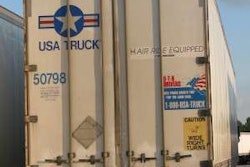A reliable and major measure of the industry’s health – TEA, or truckable economic activity – had a dramatic decline in the third quarter of 2009 versus the previous year when it already was nearly four points lower versus 2007.
“This is the most serious deterioration of TEA going back to the mid-1960s,” says Stu MacKay, president of MacKay and Co., during this week’s Heavy Duty Dialogue in Las Vegas, Nev. He notes that it doesn’t take much for TEA to have an impact on truck sales, and it showed.
The good news: “The mess we were in did bottom out and started to turn in the third quarter,” he says.
The correlation between TEA and aftermarket parts sales is less predictable. During the 2000-2001 trucking downturn, parts sales remained stable, whereas during this downturn the market is off 10 percent or more.
Truck utilization in the first quarter of last year was the worst they have seen in the decades of their recordkeeping, MacKay notes. And while utilization is improving, it remains far off from positively impacting parts sales.
MacKay predicts parts sales this year will recover 8.3 percent, resulting from fewer parked trucks, less parts cannibalization and inventory restoration.
He expects parts sales to peak next year at $16.2 billion, followed by modest declines of 1 to 2 percent between 2012 and 2014. In addition to components lasting longer, thus requiring less frequent replacement, the universe of Class 8 vehicles will not be much larger than it is today, he says.
He also notes the trend toward the dealer channel gaining more share at the expense of the independent channel will continue, predicting dealers will control nearly 50 percent of aftermarket parts sales by the year 2020.










